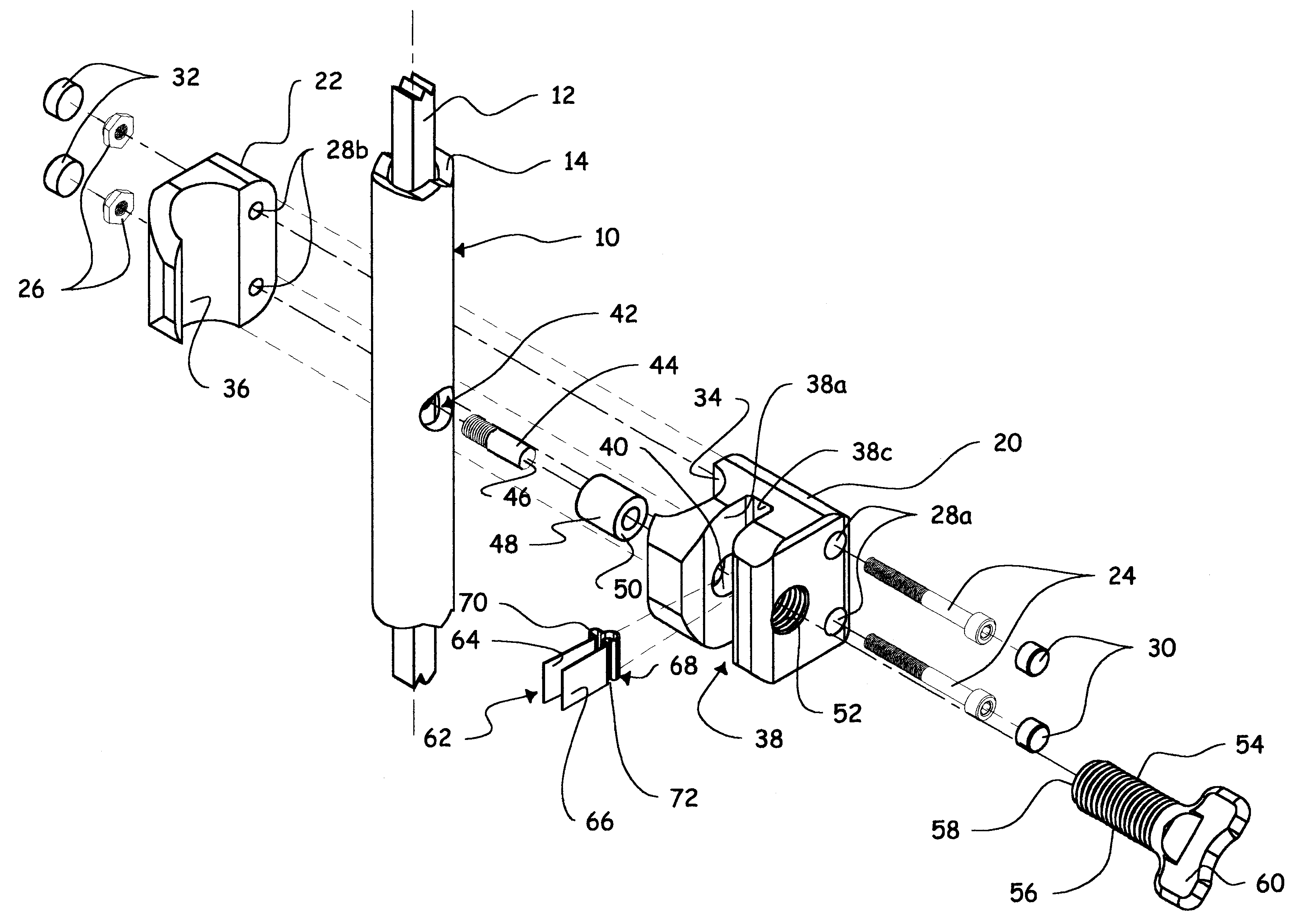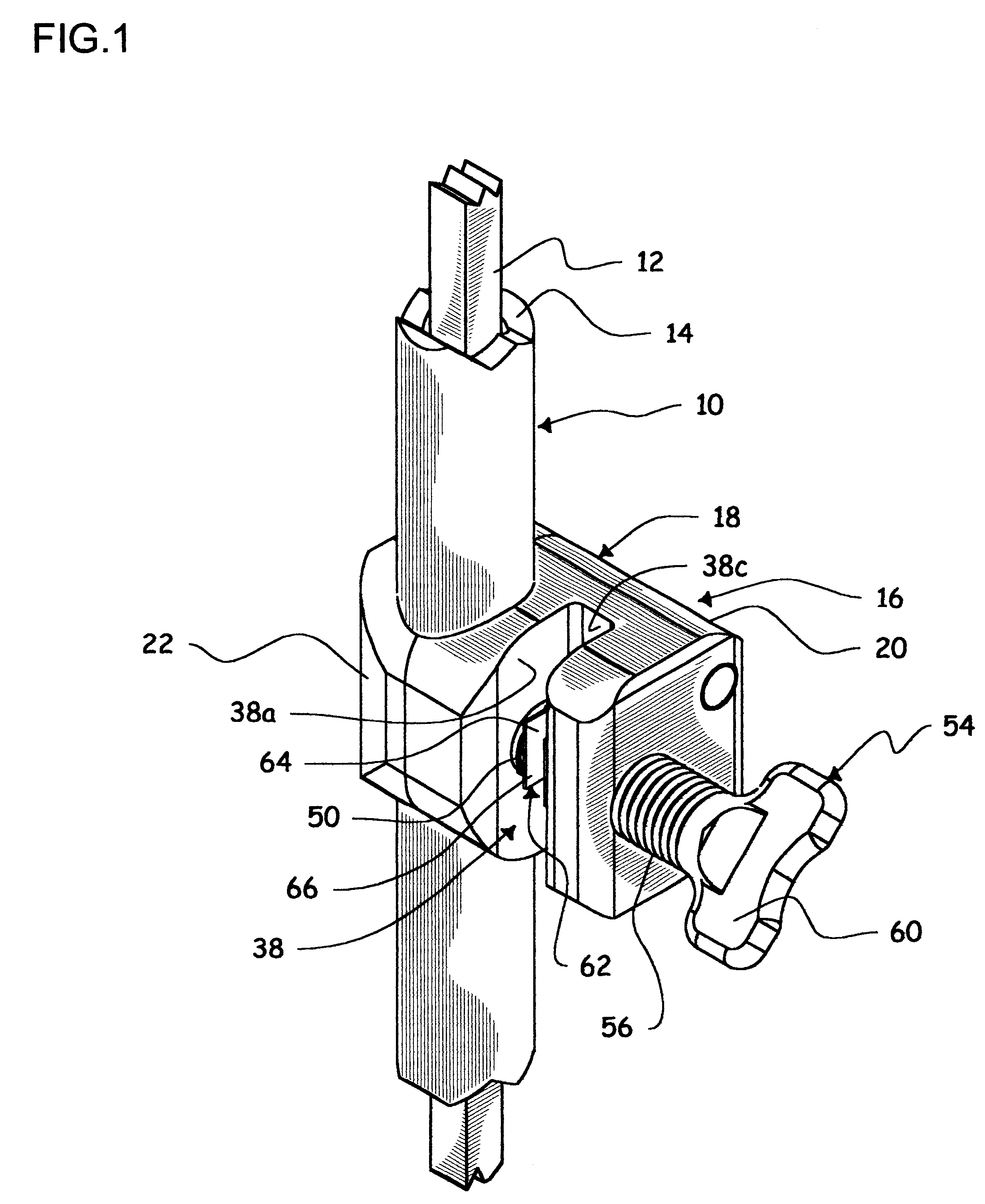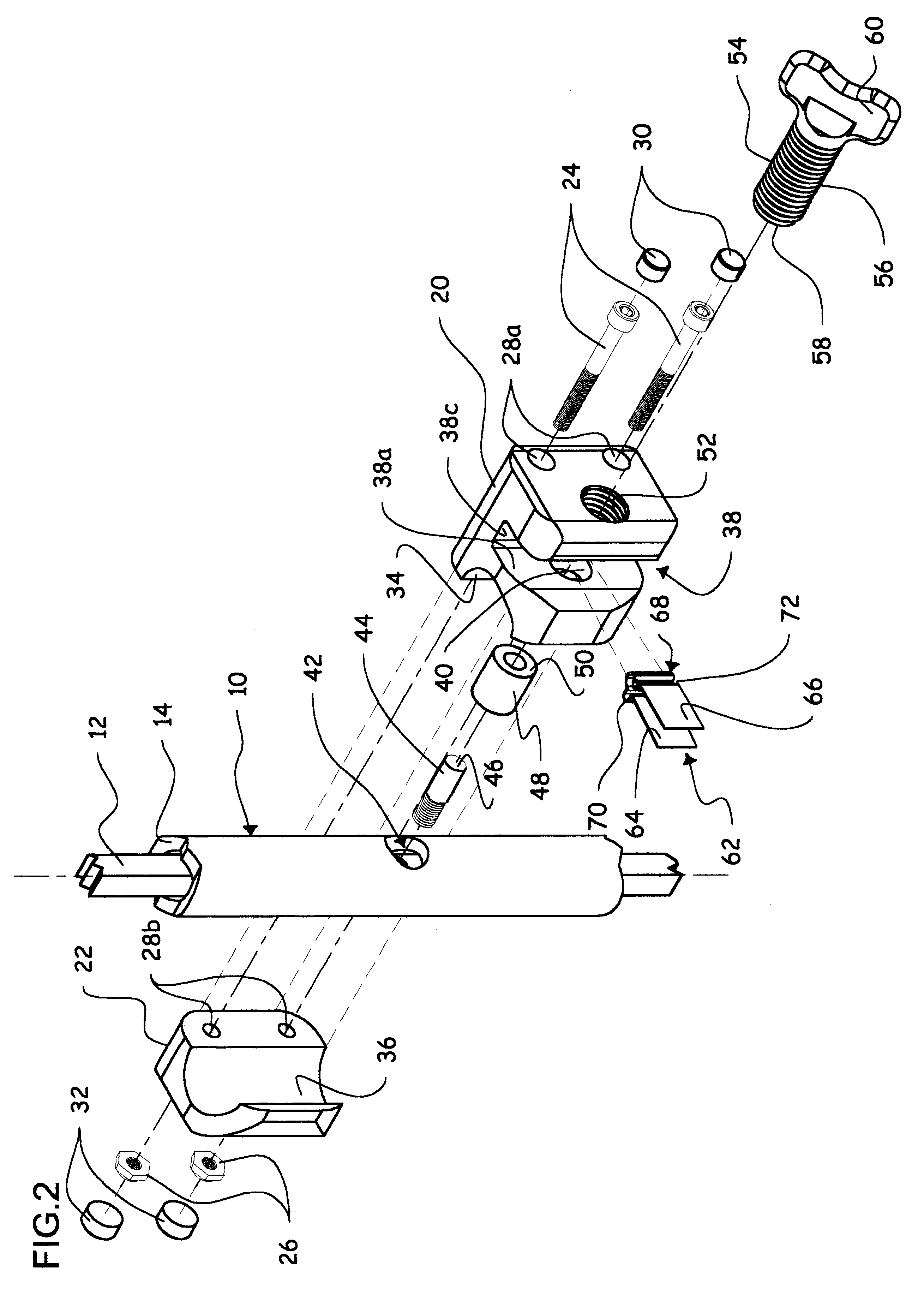Clamp for electroplating articles
a technology for electroplating articles and clamps, which is applied in the direction of building scaffolds, candle holders, lighting support devices, etc., can solve the problems of high rate of corrosion, high risk of screw damage to the board, so as to relieve the pressure
- Summary
- Abstract
- Description
- Claims
- Application Information
AI Technical Summary
Benefits of technology
Problems solved by technology
Method used
Image
Examples
Embodiment Construction
FIGS. 1 to 4 show a portion of an electroplating rack in the form of a vertical bar 10 which is attached to a cathode flight bar (not shown). Bar 10 is formed of an inner electrically conducting core rod 12, e.g. made of copper and having a square cross-section (although any suitable shape is acceptable), which is electrically connected to the cathode flight bar, and of an outer electrically insulating and fluid-tight sheath 14, e.g. made of plastic and having an annular cross-section (although any suitable closed shape is acceptable).
A clamp 16 according to the invention is attached to bar 10 as described hereinafter, for holding an article such as a board to be electroplated, to form an integrated circuit board. Clamp 16 comprises a main body or frame 18 formed of a first and a second block 20, 22 attached to each other by bolts 24 and nuts 26 running through channels 28a, 28b formed coextensively through first and second blocks 20, 22, respectively. Caps 30, 32 sealingly block ch...
PUM
| Property | Measurement | Unit |
|---|---|---|
| Pressure | aaaaa | aaaaa |
| Current | aaaaa | aaaaa |
| Electrical conductor | aaaaa | aaaaa |
Abstract
Description
Claims
Application Information
 Login to View More
Login to View More - R&D
- Intellectual Property
- Life Sciences
- Materials
- Tech Scout
- Unparalleled Data Quality
- Higher Quality Content
- 60% Fewer Hallucinations
Browse by: Latest US Patents, China's latest patents, Technical Efficacy Thesaurus, Application Domain, Technology Topic, Popular Technical Reports.
© 2025 PatSnap. All rights reserved.Legal|Privacy policy|Modern Slavery Act Transparency Statement|Sitemap|About US| Contact US: help@patsnap.com



